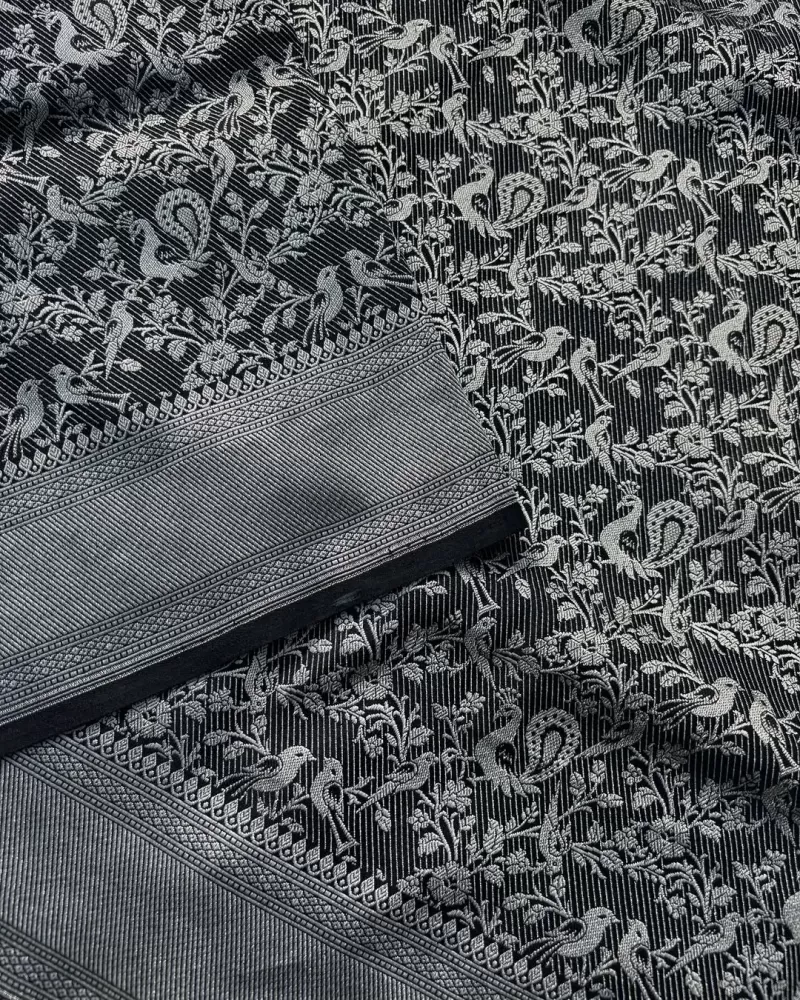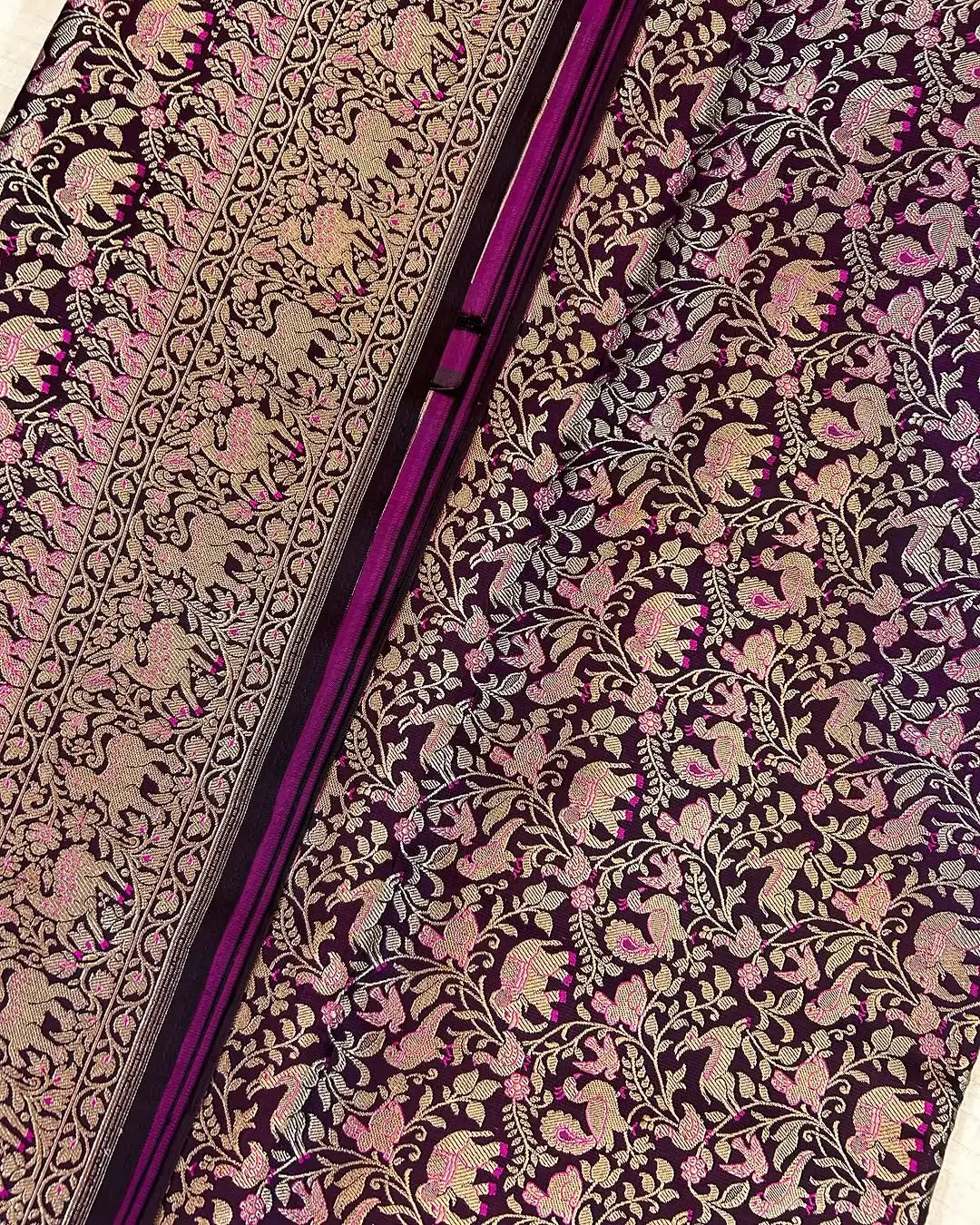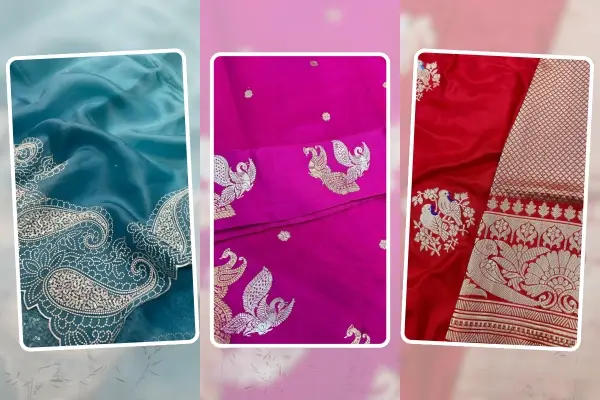Have you ever wondered what makes Banarasi sarees so expensive? This is the question of many women who are exploring Indian clothing, especially types of sarees.
The expensive Banarasi saree involves many factors that make it this pricey. It ranges from rich heritage, to intricate handloom process.
These Banarasi sarees are not merely garments but honoured works of art of Indian tradition. Let us tell you why these are costly.
A Legacy of Luxury and Craftsmanship

Banarasi sarees hail from North India (Varanasi to be precise), with a rich history of usage by women of the Mughal era (14th century). It is the Mughal emperors, chiefly Akbar the Great, who patronised these sarees, resulting in their success and fame.
These intricately made sarees with gold and silver (zari) streaks, fine silk are some of the most expensive Banarasi sarees in India. So, if you want to wear these high-value clothing pieces, you will need to spend a good amount of money on them.
The Finest Materials
The Banarasi sarees are very expensive due to the use of high-quality fabrics in making them. The pure silk sarees, made from A-grade mulberry silk, are priced higher than Tussar or cotton blends. The quality of silk, based on its texture and intrinsic shine, makes it the costliest Banarasi saree.
Zari's work is done with real gold and silver threads, adding to the saree's luxury and exclusivity. The fabric quality makes the saree a preferred choice among women for grand events. These include weddings, receptions, and even formal ethnic events.
Labor-Intensive Weaving
A Banarasi saree can be extremely labour-intensive, as the weaving process often takes from 15 days to as long as six months. The time depends on how intricate the sarees’ design and pattern are.
A Banarasi silk saree creation process can take handweavers anywhere between 10 hours to weave just 1-2 inches. These sarees are intricately hand-woven using traditional methods.
Hence, a big reason for the expensive Banarasi saree price is due to the detailed craftsmanship and the time involved.
Intricate Zari Work

The elaborate weaving of gold and silver threads, all known as Zari work, is what sets Banarasi sarees apart. It is a large contributor to their price point. Pure gold or silver zari imparts an overall weight that is also a big cost, apart from the complexity of the zari patterns. The amount of zari work done makes them the costliest Banarasi sarees in the market.
Exquisite Motifs and Designs
Banarasi sarees exhibit a combination of cultural influences with motifs and patterns inspired by Mughal art, nature, and geometric patterns. Expertise and precision are necessary for designs like— cross hatching, knotted floral and foliate motifs, kalga and bel, and jhallar.
The skill involved and the materials used here are delicate work. One of the biggest aspects that influence the price, resulting in expensive Banarasi sarees, is the complexity of these weaving patterns and designs. The ones that are very intricate and complicated are more expensive because of the time and effort involved in creating them.
The Expertise of Master Weavers
Highly skilled master weavers, with their fine-tuned skills and years of experience, are an indispensable part of making the most expensive Banarasi sarees. Most of them come from families of weavers and this lends an incredible level of craftsmanship to each saree.
Thus, depending on the level of weaver’s skill and finishing of the saree, the price goes up.
Geographical Indication (GI) Tag
The Geographical Indication (GI) tag is a form of intellectual property right that marks a good as an original product of a region. In the case of Banarasi sarees, the GI tag means that no saree produced outside of the six identified districts of Uttar Pradesh can be legally sold as a Banarasi saree and brocade.
This has not just safeguarded the originality and heritage of the Banarasi sarees, but has also influenced the pricing of sarees. It acts as a guarantee to the end-user regarding the provenance and quality, resulting in expensive Banarasi sarees.
Market Demand and Consumer Preferences
A huge factor in Banarasi saree pricing is the market demand. The cultural significance and classic beauty of Banarasi sarees ensures a healthy market for them that never really dries up.
Women wear the most expensive Banarasi sarees for weddings, festive celebrations, and special occasions, representing grace, heritage, and cultural richness. Highly intricate designs and quality raw materials like pure silk and zari make these sarees expensive.
Weaving Techniques and Their Impact
Banarasi sarees are made using different weaving methods including Kadhwa, Cutwork, Kadhiyal, Meenakari, and Tanchoi, which all help to increase the attraction and price of the saree. The complicated Kadhwa technique, where each motif is woven separately, is one of the finest and has the most complex process.
Hence, the garments made with this technique fetch a high selling price. These methods are also detailed and time-consuming, which results in a costly Banarasi saree.
Rare and Unique Designs
Certain rare and unique Banarasi sarees are considered highly valuable due to their distinctive designs, historical significance, and the exceptional craftsmanship involved in their creation.
Examples include sarees with intricate Mughal-inspired patterns, vintage pieces with unique English motifs, and those crafted using the Kadhawa weaving technique. These sarees, often part of a vintage collection, represent a perfect match for heirloom luxury, commanding a premium price due to their rarity and artistic value.
Enjoy the Enduring Appeal of Banarasi Saree
While cheaper, machine-made alternatives abound, the expensive Baranasi silk saree is still the first choice of women in India. Tons of sarees are purchased by the aficionados and Indian brides for their unmatched beauty and workmanship.
The weavers' dedication and artistry, combined with their persistent efforts to preserve traditional weaving techniques, justify the high prices of Banarasi sarees. Visit Albeli if you are looking for an authentic Banarasi saree shop in Varanasi.
With the rise in their popularity, Banarasi sarees are evolving in terms of their colour palette, use of fabrics blends and more. At Albeli, you can explore our collection of these timeless pieces of art made by experienced weavers. Get on a video call with us to find your desired Banarasi saree at the comfort of your home.






Comments
Leave A Comment: